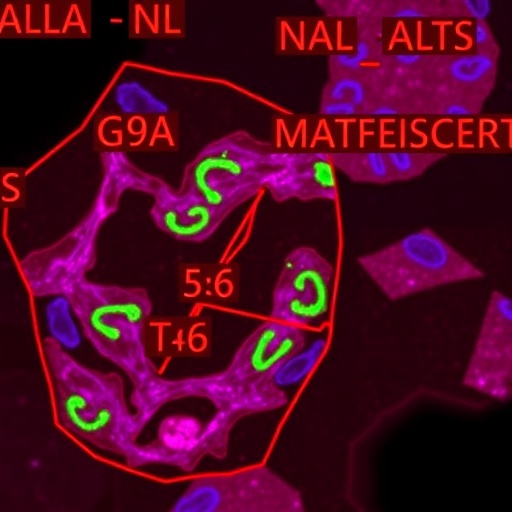Nicole F. Steinmetz, PhD, George J. Picha Professor in Biomaterials, member of the Case Comprehensive Cancer Center, and Director of the Center for Bio-Nanotechnology at Case Western Reserve School of Medicine, has received two major grants from the National Institutes of Health to develop microscopic drug-delivery systems for patients living with breast cancer, and patients at risk for serious blood clots.
The new R01 awards are provided by the National Cancer Institute (NCI), and the National Heart, Lung, and Blood Institute (NHLBI). Steinmetz plans to collaborate with fellow members of the Case Comprehensive Cancer Center (Ruth Keri, PhD, Julian Kim MD), Case Center for Imaging Research (Xin Yu, ScD), and the CWRU Cardiovascular Research Institute (Yunmei Wang, PhD, Daniel Simon, MD), as well as collaborators at Dartmouth Geisel School of Medicine (Steven Fiering, PhD) for the funded studies.
"Nanoparticle engineering is an evolving field, with enormous potential in molecular imaging and therapeutics. We are thrilled that the National Institutes of Health is supportive of this new frontier in medicine," Steinmetz said.
As part of a $2.2 million NCI award, Steinmetz will develop therapeutic nanotechnology specifically for triple negative breast cancer patients. Triple negative breast cancer cells do not have receptors on their surfaces that are often leveraged by drug developers, severely limiting treatment options for about 15% of patients. But last year, Steinmetz and colleagues found virus-like particles from a plant virus — cowpea mosaic virus — can stimulate the immune system to fight tumors and prevent outgrowth of metastasis. The new funding will allow Steinmetz and her team to explore mechanisms behind the anti-tumor effects and develop dual-pronged therapeutic approaches through drug delivery strategies.
Said Steinmetz, "These plant virus-like particles have cancer-fighting qualities on their own, but they can also be used as vehicles to encapsulate therapeutics, such as chemo- and immune drugs, to synergize and potentiate the cancer immunotherapy. With the new grant, we will test whether combining the particles with breast cancer medications can combat breast cancer in mice." Steinmetz will also investigate how the size and shape of the virus-like particles influence immune cells, to identify characteristics that could be used to develop other therapeutic molecules.
A separate $2.6 million NHLBI award will enable Steinmetz to develop nanotechnology to identify deep vein thromboses — blood clots — before they become fatal. Deep clots can be difficult to spot until it's too late, leading to tens of thousands of deaths annually in the United States. Even clots that are successfully found and disrupted often recur. According to Steinmetz, combining nanotechnology with MRIs could improve early diagnoses and guide therapeutic intervention.
"We are developing a biology-derived plant virus nanotechnology, here using the tobacco mosaic virus, for molecular imaging and drug delivery. The non-invasive MRI approach will allow us to gain molecular information about the thrombus, therefore aiding prognosis," Steinmetz said. Steinmetz and her team will engineer the molecule — injected into the bloodstream during MRIs–to not only help doctors see blood clots, but also to disrupt clots and deliver medications. Said Steinmetz, "By integrating imaging and therapeutic capabilities, our approach will help diagnose patients, treat the disease, and monitor disease progression over time."
Both grants begin this summer and provide funding for five years. If the projects are successful, they are eligible for renewal.
###
N.F.S. is listed as principal investigator on both NIH awards, NCI R01CA224605 and NHLBI R01HL137674.
For more information about Case Western Reserve University School of Medicine, please visit: http://case.edu/medicine.
Media Contact
Marc Kaplan
[email protected]
216-368-4692
@cwru
http://www.case.edu
http://casemed.case.edu/cwrumed360/news-releases/release.cfm?news_id=669
############
Story Source: Materials provided by Scienmag




